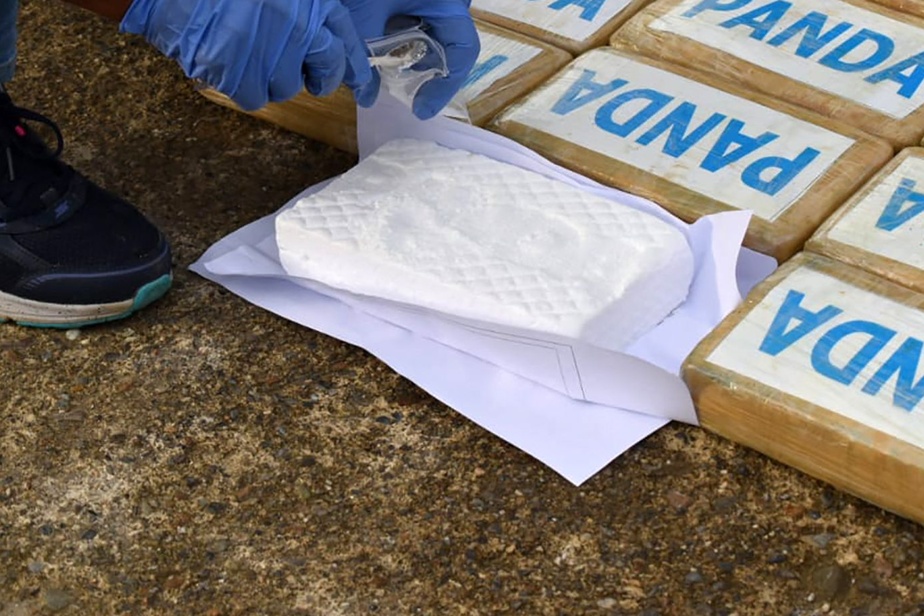(Bogotá) The cocaine market is changing. While Colombia remains the largest producer of the drug, other players around the world are beginning to gain importance in its manufacturing and distribution, according to a report based on thousands of Colombian prosecutor’s files leaked by computer hackers. .
Colombia reached a record coca leaf cultivation in 2022, with 230,000 hectares planted and production of 1,738 tonnes of cocaine, according to the United Nations.
But Mexican, Albanian, Brazilian, Ecuadorian and Israeli groups are starting to gain power in the global drug trade, according to a group of around 100 journalists, who deciphered seven million emails and 38,000 files leaked by the group. Guacamaya, who in 2022 hacked the security agencies and armies of Mexico, Chile, Peru, Salvador and Colombia.
This is where “Narcofiles” was born, a report which outlines the networks of cocaine production and trafficking around the world. “The market is changing,” Nathan Jaccard, Latin America editor for the Organized Crime and Corruption Reporting Project (OCCRP), a consortium of investigative journalists, told AFP.
In August 2022, with journalists from 23 countries, he had access to hacked files from the Colombian prosecutor’s office which notably show the role of the banana industry in the export of cocaine and the increase in trafficking along routes such as the Amazon River, from which more and more submarines loaded with cocaine leave for the Atlantic.
One of the new hot spots in the cocaine market is also the triple border between Colombia, Peru and Brazil, a region “relatively calm until 15 years ago”, underlines Nathan Jaccard.
The “Narcofiles” report also reveals that coca leaf plantations have multiplied in Central America and Mexico, while coca paste is increasingly processed in laboratories in Europe.
Banana industry
Falling coca leaf prices in Colombia and the emergence of new drugs around the world have damaged the country’s cocaine trade, experts note. “Colombia no longer plays a leading role in the international drug trafficking chain,” explains Elizabeth Dickinson, analyst at Crisis Group.
“Drug traffickers decide to move closer to markets” to reduce costs and risks, while maximizing profits, explains Mr. Jaccard.
These changes have resulted in the Colombian cartels, which once sheltered kingpins such as Pablo Escobar, no longer “leading the way” on the market, underlines Mme Dickinson.
Although large criminal structures such as the Clan del Golfo, the world’s leading producer of cocaine, continue to operate in the country, “we are witnessing a process of atomization of groups” which reduces their power, continues Mr. Jaccard.
At the same time, Mexican, Albanian, Brazilian, Ecuadorian and Israeli groups are gaining strength. “Other players are developing and could compete with Colombia in the market in the future,” confirms Ana Maria Rueda, researcher at the Ideas para la Paz foundation.
A memorandum between Colombia and Israel, obtained in the leaked documents, describes a “significant increase” in crimes committed in the South American country by Israelis attracted by sex tourism and linked, according to local authorities, to cocaine trafficking cases.
The “Narcofiles” report reveals the growing role of the banana industry in the export of cocaine. According to the European Commission, 70% of drug seizures in Europe take place at ports. Traffickers use banana shipments to hide their goods, as fresh produce passes customs checks more quickly.
